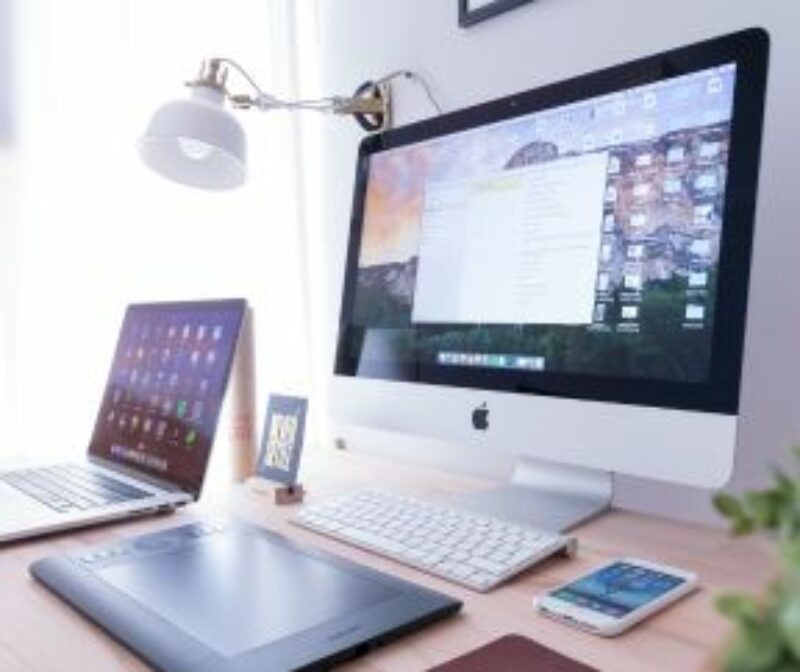If you’re above the age of about 40, you remember the days of frequenting the local movie store on a Friday night and renting the latest release (be kind rewind, y’all). I sometimes miss that simplicity. Nowadays, we all know the annoyance of wanting to watch a popular show and then figuring out we don’t subscribe to that platform. Kind of a rotten deal. Subscriptions are expensive, and how much does that total bill creep up to over time?
When it comes to screens as a whole, our modern-day society is fully subscribed. We pay for every channel and platform screens offer us, so to speak, without really considering the full opportunity cost of this trade (an economic principle developed in the Austrian school of economics and popularized by Dr. Gary Becker in the 1960s) because it isn’t just our bank account screens are impacting. On top of handing over our cash, we hand over the even more precious, limited resources of our time and loving communities.
Years ago, I heard a message by the late Pastor Myles Munroe that became a core memory for me titled, “Don’t Die Old, Die Empty.” The premise is that graveyards are the wealthiest places on earth, with all unaccomplished dreams and giftings laid to rest with their owners. He spoke of these riches as more precious than rare jewels. How many inventions are being left undiscovered because, instead of leaving room for imagination and boredom — which promote creativity, invention, and resilience—we trade this time for screens?
Consider the amount of time and focus it takes to write a book, a piece of music, create a work of art, start a business, or build a career. How much of our life time are we using as currency for screen time? Even more worthy of wonder: how much are we setting up our kids to pay? What is the opportunity cost here?
The other substantial payment for our screen subscription is our relationships and, really, even our basic human interactions. We all know the pervasive “head-down” posture—no description needed. It has replaced our natural instinct to observe human nature, where we are wired to subconsciously absorb social cues around us, deepening our empathy for and understanding of humanity. We have become addicted to the illusion of connection through a screen and are, ironically, lonelier than ever. There are legitimate online communities, but you’ll notice that eventually, many of these groups follow the natural gravity towards in-person connection. We are hard-wired with a longing to look others in the eyes.
Screens do have purpose and power for good. They even give us the ability to fulfill our dreams. The real valuation of screen time use is in the quality of our engagement. There is incredible real-world value in understanding how to use many types of software and programs. We are able to work remotely—what a game changer! The modern-day capacity for research that screens extend us is astounding, and they really provide us with some incredible entertainment.
Screens have also offered support to parents in ways previous generations have not had. Sometimes parents are desperate for help occupying their children. It must be acknowledged that the world is different from previous generations in the fact that we are so mobile. We have the ability to move with much more ease, so we often do not have our “village” or family support system nearby. Parents need and deserve breaks.
The integration of screens into our lives is here to stay, but our need to balance the real and virtual world is reaching a tipping point. How do we find balance? How can we bring back extended engagement in unstructured play for both kids and adults?
I’m not suggesting we throw our devices into the nearest body of water (although the toilet sometimes feels appropriate), but we need to guard our treasure with a keen awareness of the cost. It would serve us well to develop a mindfulness practice around our screen transactions. Is this screen interaction worthy of the cost? The answer could very well be yes!
But, as Voiltaire said (made pop-culture famous thanks to Uncle Ben and Spiderman), “With great power comes great responsibility.” Who is mitigating that power? Certainly not, in this situation, the one with the power—the screen. We have agency to control our screen consumption, but technology is constantly evolving to circumvent our threshold for this self-regulation. With this understanding, we must become ever more intentional to reestablish our dominance as the ultimate decision-maker of our time trade-offs.
Practice:
The beginning of change always starts the same: with the awareness and admission of the need for it.
Consider taking 5-10 minutes to think about your screen use, maybe even writing down the times of day and purposes for which you are most likely to use screens.
Next, take a moment to focus on your passions, giftings, dreams, relationships, and overall community. Are you experiencing an unintentional opportunity cost with your current screen time patterns?
If you are a parent or caretaker, consider your children’s screen time habits and if there are other activities you would like to see take the place of some screen time.
Here are a few ways to redirect screen time habits:
- Acknowledge that not every moment has to be filled with an activity, distraction, or engagement for your brain. Take in your surroundings instead. Observe people, nature, patterns.
- Actively become curious again—daydream, get lost in your thoughts.
- When home, keep your phone in one room instead of carrying it with you.
- Set social media time limits on your phone.
- Charge your phone somewhere other than right next to your bed.
- Purchase a separate alarm clock.
- Choose to read even two pages in a book instead of scrolling social media at bedtime.
- Designate screen-free times, such as meal times.
- Leave your phone sometimes, when feasible. Leave it in the car when you go into a restaurant, or at home if you run around the corner for a quick errand. Remember that most every generation has only had a phone at home!
- Pick something you can choose in the place of screen time or choose a productive way to use screen time: either bring a book in the car with you or download books to an app, download a language app (many have free versions and 5 minute-lesson options—it adds up).
- Keep the perspective that your kids, and those around you, model your behavior.
- Narrate your phone usage to your kids. “I’m writing a grocery list.” “I’m scheduling a doctor’s appointment.” “I’m texting my friend.” It gives them context for the many ways we use our phones.
Let’s bring back the “head up” posture!
Resources:
The Anxious Generation by Jonathan Haidt
Economic Decision Making by Gary Becker
Let it Grow.org, co-founded by Jonathan Haidt and Lenore Skenazy
GIRLS, founded by Freya India
How to Break Up With Your Phone by Catherine Price
Continue Exploring

Mindfulness
Screen Time: Here’s What Happened When I Took my Kids’ Screens
Writer Amy Dunn tells us that taking screens away marked her. "I watched my kids immediately become completely lost in their own imaginations for not just minutes, but hours and hours."

Emotions
Raising Emotionally Healthy Teens (Part 1): Emotional Awareness
Guest blogger, Leanne Bishara, offers 3 research backed tips for fostering emotional awareness in teens.

Youth
Raising Emotionally Healthy Teens (Part 2): Emotion Regulation
Guest blogger, Leanne Bishara, discusses how transitioning to high school can be tough on youth. Discover how you can help them academically succeed through a growth mindset.

